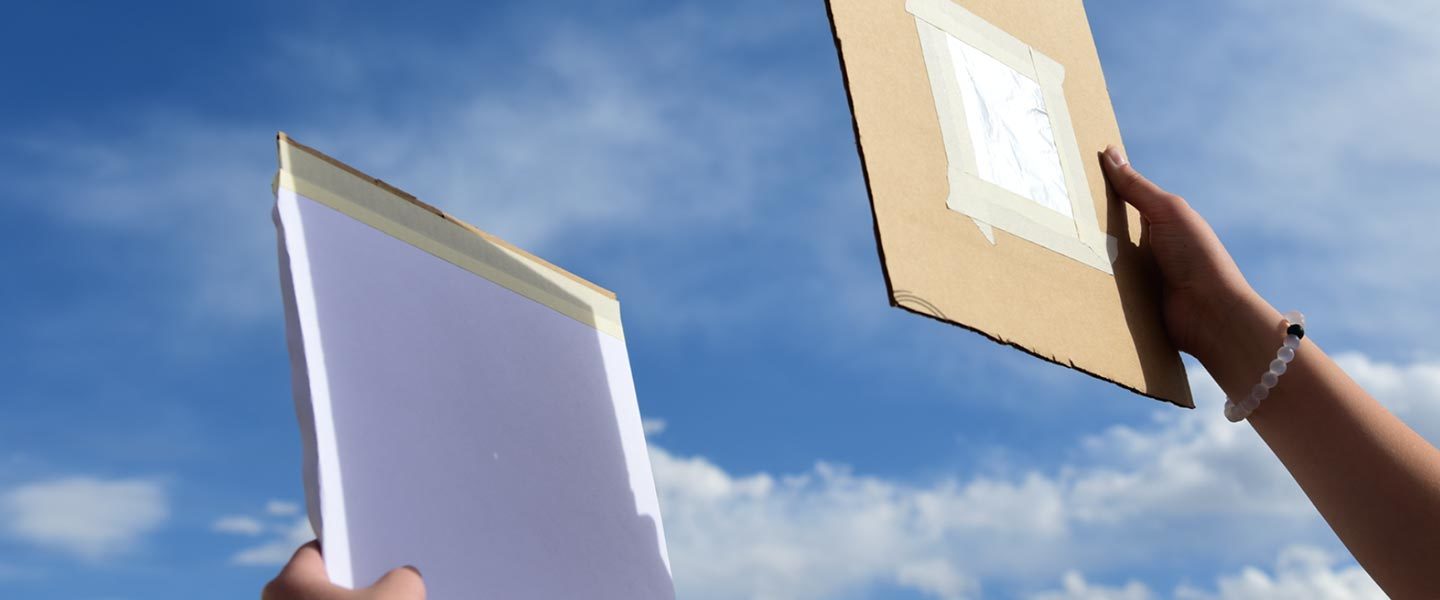Solar Oven S'mores
So many great things are synonymous with “summertime yummies!” We can’t think of a summer treat we enjoy quite as much as a s’more: warm, […]

Using a few materials you probably have around the house, you can build a viewing device that will safely reflect the sun and allow for you to view the eclipse in its reflection.

In the center of one of the pieces of cardboard, cut out a 2″ (5 cm) square. With the help of an adult helper, we recommend either scissors or a box cutter to help.

Use scissors to cut a 4″ (10 cm) square out of the foil.

Tape around the edges of the foil to hold it in place over the hole in the cardboard. Handle the foil with care to ensure that it stays smooth over the hole.

Use the pin to make a small pinhole in the center of the foil

Tape the piece of the paper to the other piece of cardboard. This is your screen. That’s it!

Again, do not look directly at the sun or a solar eclipse! Set up or hold the screen so it’s facing the sun. Keep your back to the sun and hold the screen an arm’s length or so from the foil. Find the image of the sun on the screen coming through the pinhole. Move the screen back and forth slowly until the image looks best. Keep in mind that the farther the pinhole is from the screen, the bigger the image will be on the screen but it loses brightness. What you see is not just a beam of light making a dot on the screen, it’s an actual image of the sun. It’s small but it’s the real thing.
The pinhole allows only a tiny portion of the light from the sun that’s hitting the foil to get by it. Only a few of the light rays from the sun are traveling in the right direction so they can pass through the pinhole. On the other side of the pinhole, this “filtered” light hits the screen and forms an upside down image of the sun. If you experiment with different size pinholes, you’ll find a larger pinhole only makes the disk brighter but blurry. A smaller pinhole will make it dim but it’ll have sharper edges. No matter what you do, however, the image is small and seeing details on the sun’s surface won’t happen with this viewer. You can sometimes see clouds passing in front of the sun as you look at the image.
SOLAR SCIENCE RULE: NEVER look directly at the sun or a solar eclipse! The energy you feel on your skin is focused by the lens in your eyes onto the retina where images are collected. The heat energy is intense on that small spot. It will burn the retina and can permanently destroy it. Sunglasses are useless and nothing else you have in your home will protect your eyes either. Never look directly at the sun or a solar eclipse!
For additional information about solar viewing techniques and rules, please visit the American Astronomical Society at https://eclipse.aas.org/resources/solar-filters.
The sun’s core can reach 22.5 million°F (12.5 million°C). The surface temperature is about 9,900 F (5,500°C). The outer atmosphere of the sun (seen during a solar eclipse) can be up to 2 million°F (1.1 million°C). Wow!